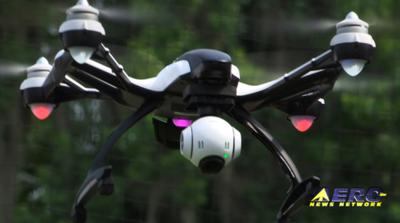Wed, Aug 05, 2015
Report: Analysis Of First 500 FAA Exemptions Finds Real Estate, Agriculture And Construction Among The Top Industries Approved For Commercial Operations
The Association for Unmanned Vehicle Systems International today released a new report that finds more than 20 industries have received exemptions from the Federal Aviation Administration to operate unmanned aircraft systems commercially in the National Airspace System. According to the report, the real estate industry has received the most exemptions followed by the agriculture and construction industries. The report also finds that exemptions have been approved in 48 states.

“Businesses across every industry sector have been waiting to use UAS for years and are excited to finally get this technology off the ground,” said Brian Wynne, president and CEO of AUVSI. “From inspecting pipelines and surveying bridges to filming movies and providing farmers with aerial views of their crops, the applications of UAS are virtually limitless and offer a superior way to see what needs to be seen, in less time and at less expense.”
In May 2014, the FAA announced it would consider granting exemptions for certain low-risk commercial UAS applications under Section 333 of the FAA Modernization and Reform Act of 2012. Since then, the agency has approved more than 800 petitions out of more than 2,200 requests, so far.
AUVSI analyzed the first 500 exemptions approved by the FAA. Specifically, the report finds:
- The approved exemptions cover more than 20 industries. The most approvals were granted to real estate with 153 references in the first 500. The agriculture industry received 106 exemptions and construction received 74.
- Exemptions were approved for operators in 48 states. California received the most with 70 exemptions, followed by Texas with 46 and Florida with 40.
- California companies also manufactured the most platforms mentioned in the approvals, totaling 50. Florida followed with 18. In all, 21 states house manufacturers of platforms approved in the first 500 exemptions.
- More than 80 percent of the first 500 exemptions were granted to small businesses; 196 companies that received exemptions add nearly 500 billion to the U.S. economy annually.

While the 333 process has begun to unlock the potential of UAS technology, AUVSI emphasized that regulating by exemption is no substitute for finalized rules.
“This current system of case-by-case approvals isn’t a long-term solution for the many businesses wanting to fly. As an industry, we want to see the integration of UAS proceed and without any further delays,” Wynne said. “The FAA needs to finalize the small UAS rules as quickly as possible. Once this happens, we will have an established framework for UAS operations that will allow anyone who follows the rules to fly.”
A 2013 economic impact study by AUVSI found that the UAS industry stands to create more than 100,000 new jobs and more than $82 billion in economic impact within the first ten years following UAS integration.
“With a favorable regulatory environment, there’s no question these numbers could go higher. The first 500 exemptions are proof of this. But the longer we take, the more our nation risks losing its innovation edge along with billions in economic impact,” Wynne said.
According to the report, despite the commercial UAS industry being in its infancy, companies across the U.S. are involved with manufacturing and operations, and the positive effects of finalized rules for airspace integration will be felt across the country.
More News
The Industry Continues to be Rocked By Some Questionable Operations Recent investigations and a great deal of data has resulted in ANN’s SportPlane Resource Guide’s rep>[...]
Make Sure You NEVER Miss A New Story From Aero-News Network Do you ever feel like you never see posts from a certain person or page on Facebook or Instagram? Here’s how you c>[...]
Visual Approach Slope Indicator (VASI) An airport lighting facility providing vertical visual approach slope guidance to aircraft during approach to landing by radiating a directio>[...]
Airport Marking Aids Markings used on runway and taxiway surfaces to identify a specific runway, a runway threshold, a centerline, a hold line, etc. A runway should be marked in ac>[...]
Aero Linx: The Skyhawk Association The Skyhawk Association is a non-profit organization founded by former Skyhawk Pilots which is open to anyone with an affinity for the A-4 Skyhaw>[...]
 Unfortunate... ANN/SportPlane Resource Guide Adds To Cautionary Advisories
Unfortunate... ANN/SportPlane Resource Guide Adds To Cautionary Advisories ANN FAQ: Turn On Post Notifications
ANN FAQ: Turn On Post Notifications ANN's Daily Aero-Term (04.29.24): Visual Approach Slope Indicator (VASI)
ANN's Daily Aero-Term (04.29.24): Visual Approach Slope Indicator (VASI) ANN's Daily Aero-Term (04.28.24): Airport Marking Aids
ANN's Daily Aero-Term (04.28.24): Airport Marking Aids ANN's Daily Aero-Linx (04.28.24)
ANN's Daily Aero-Linx (04.28.24)




